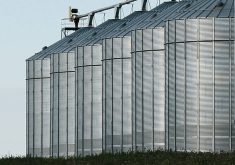While the risk to Canadians is low, the Public Health Agency of Canada is searching for the source of a salmonella outbreak.
The federal agency said there are 34 cases of salmonella illness in eight provinces. The individuals became sick between June 12 and Sept. 20. Eight people have been hospitalized and all are recovering or recovered. No one has died.
The source of infection has not been identified, but officials are still investigating.
Anyone can become sick with a salmonella infection, but infants, children and seniors and those with weakened immune systems are at a higher risk of serious illness and can get sick more easily than others.
Read Also

Canada and China discuss disputes over canola and EVs, says Ottawa
Senior Canadian and Chinese officials discussed bilateral trade disputes involving canola and electric vehicles on Friday, Ottawa said, but gave no indication of any immediate breakthrough.
Salmonella can be passed on through contaminated food, pets and other environmental sources. Contaminated food looks, tastes and smells the same as normal.
The agency recommends:
• Washing hands thoroughly with soap and water before and after handling all food products.
• Cooking food to a safe internal temperature
• Keeping raw food away from other food while shopping, storing, serving or preparing food.
• Washing fresh fruit and vegetables before eating, cleaning counters and cutting boards and washing hands regularly.
• Washing hands after contact with animal feces.
Symptoms of salmonella are fever, chills, diarrhea, abdominal cramps, headache, nausea and vomiting and last four to seven days.
mary.macarthur@producer.com














